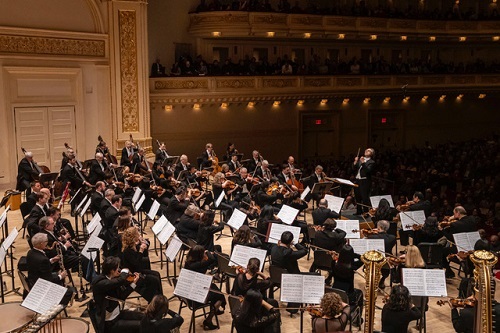 United States Prokofiev: Chicago Symphony Orchestra / Riccardo Muti, Carnegie Hall, New York, 16.12.2019. (RP)
United States Prokofiev: Chicago Symphony Orchestra / Riccardo Muti, Carnegie Hall, New York, 16.12.2019. (RP)

Prokofiev – Selections from Romeo and Juliet Op.64, Symphony No.3 Op.44
‘There is no question in my mind as to the talent of young Serge’, wrote Frederick Stock, the music director of the Chicago Symphony Orchestra, to Cyrus McCormick, Jr., president of the International Harvester Company. McCormick had met Prokofiev, who was then 26, while on a business trip to Russia in the summer of 1917. Although the American businessman had no idea who the young composer was, Prokofiev immediately recognized McCormick’s name from the farm machinery used on the estate that his father managed.
The following year, Prokofiev made his debut with the CSO, playing his First Piano Concerto and conducting his Scythian Suite, which McCormick paid to have published. This was his first visit to Chicago, and he would return several times. In December 1921, the CSO premiered his Third Piano Concerto, with the composer again as soloist, and later that month he conducted the premiere of his opera The Love for Three Oranges. On Prokofiev’s final visit to Chicago in 1937, the year after he and his family had permanently settled in Moscow, he conducted selections from the ballet Romeo and Juliet, which had yet to be staged.
Riccardo Muti and the CSO opened this Carnegie Hall concert with selections from Romeo and Juliet. In 1936 Prokofiev arranged two orchestral suites of seven excerpts each, and it was the first of these that he conducted in Chicago the following year. For this concert, Muti chose selections from both suites that captured the dramatic arc of the tragic tale as vividly as Shakespeare’s play or the entirety of Prokofiev’s ballet.
Muti has been the CSO’s music director since 2010. He has long been treasured for his attention to detail and the integrity of his interpretations, but the lush, homogenous carpet of sound that he has crafted with the CSO players is extraordinary. In the music from Romeo and Juliet, the solos which so vividly capture the personalities and emotions of each scene emerged as part of an integrated whole. There were, of course, star turns – especially noteworthy was the subtle, mellow playing of principal flutist Stefán Ragnar Höskuldsson – but the solos were threads of color and emotion woven into a rich tapestry of exquisite detail and beauty.
In Romeo and Juliet, the violence is intermingled with courtly dances and the tender emotions of the young lovers. In Prokofiev’s Third Symphony, it is the grotesque power and fury of the music that predominates, except for the lighter textures of the second movement. The clanging of bells, driving rhythms and crashing dissonances combine to create music of power and desperate emotions, which Muti conducted with passion and refinement.
For all of the drama and sweep of Romeo and Juliet, it is still programmatic, episodic ballet music. In the Third Symphony, Prokofiev unleashed giant waves of sound. The richness of the CSO’s strings, from the gossamer playing of the violins to the more percussive, aggressive thrust of the lower strings, coupled with the molten, bronze-like sound of the CSO’s fabled brass section, created the musical carpet which the woodwinds, brass and percussion rode, creating dizzying delights of orchestral colors. The final, violent chords were terrifying in their intensity.
A hundred years ago, Chicago critics described Prokofiev’s music as being savage and barbaric, with weird harmonies but ‘big, sincere, true’. They noted that, nonetheless, Prokofiev was given thunderous ovations due to the tumultuous emotions that he inspired in the listeners. The same words could be written of Muti and the CSO’s performance of Prokofiev’s Third Symphony at Carnegie Hall one hundred years later.
Rick Perdian